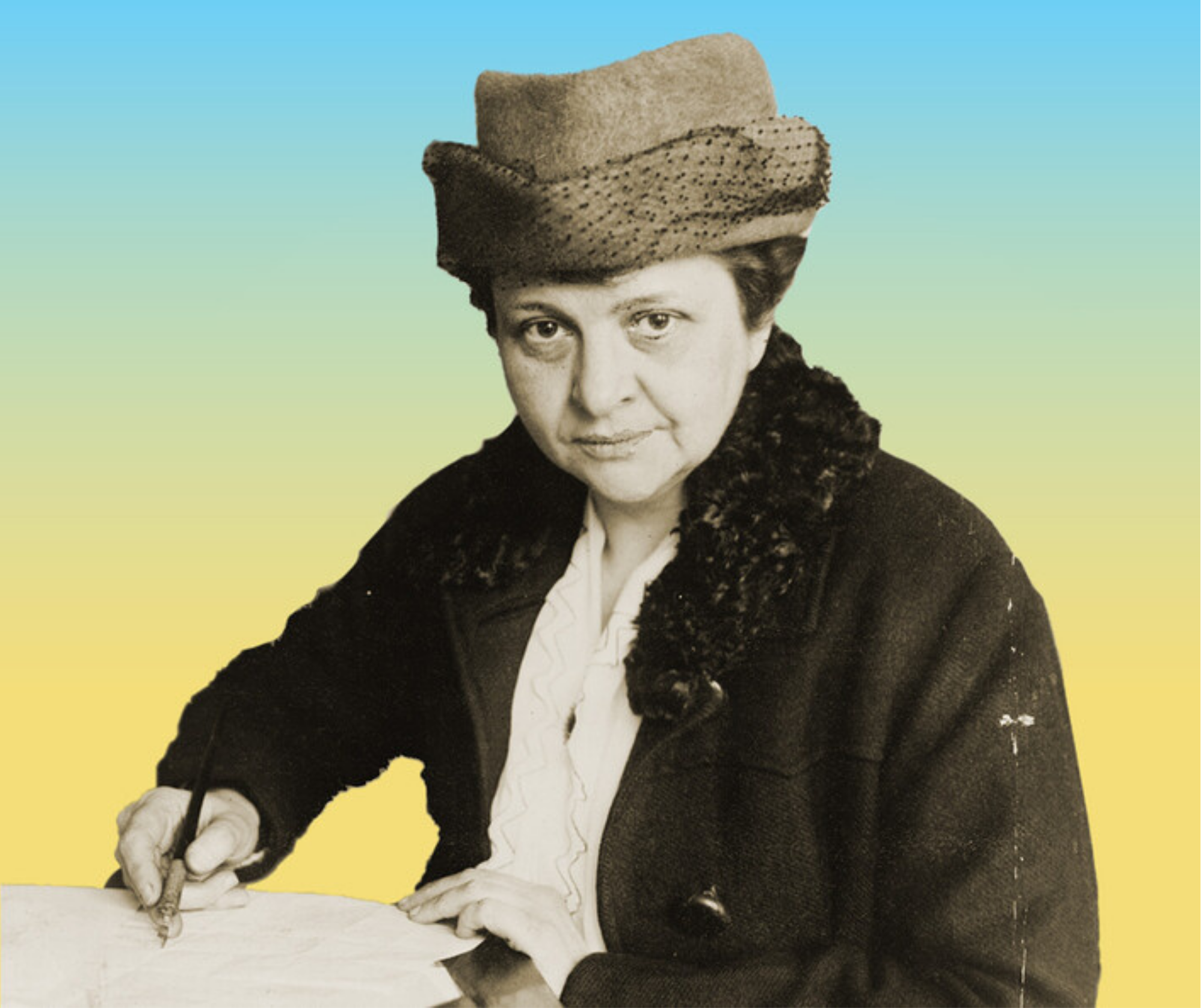Written by Kathleen Fargione
I have loved psychoanalysis all my adult life. Not every social worker shares my feelings. Many have serious concerns about the validity and effectiveness of psychoanalysis. They question some of Freud’s ideas and flatly reject others. They fault him for his patriarchy, or for his emphasis on the aggressive and libidinal drives, or for his mistaken notions about women. Many of their hesitations seem to me to be legitimate criticisms.
So why do I try to work psychoanalytically? What does it add to my practice? Despite my disagreements with some of Freud’s ideas, I keep returning to psychoanalysis because I find that helping a patient alter their behavior often does not bring lasting change. Behaviors fueled by unacknowledged, buried feelings do not go away. They go underground and return in different disguises. I get curious about my patients and wonder what psychoanalysis might have to say about them.
I believe that focusing on the things Freud got wrong ignores the profound importance of the things he got right: the unconscious, transference, defenses, and early development. All these ideas are psychoanalytic ones. You cannot listen to MPR without running into these ideas. Perhaps we forget to give Freud credit because they have become part of the air that we breathe, part of our understanding of the world.
Freud’s realization that the mind is both conscious and unconscious marked a watershed in our understanding of minds and how they develop. Today, this idea that unconscious thoughts influence our conscious thinking and our decision making is well accepted. We find it in books like Malcolm Gladwell’s Blink and Jonah Leher’s How We Decide. But it is a psychoanalytic idea.
It was Freud who realized that psychic reality is not the same as material reality. Material reality is what we experience – what we see, hear, touch, smell. Psychic reality is the meaning each individual puts on that experience. Psychic reality is material reality colored by our hopes and fears and anxieties. This idea of psychic reality is what made Freud’s theory revolutionary. It meant that our minds are not, as was commonly thought, a perfect mirror of the world around us. Our minds, instead, are unique to each of us and carry our unique interpretations of the world we experience – our own psychic reality.
Today, we know much more, neurologically, about the brain than Freud ever could have. But without the benefits of modern science, he insisted that the mind is not wholly conscious. That insistence has been validated by neuroscience, which has located the part of the brain that stores nonconscious, implicit memories. Science is catching up with Freud’s intuition. When I work psychoanalytically, I am congruent with current neurological evidence.
Freud’s recognition of the phenomenon of transference alerts us to the ways that we – and our patients – make the same relationship mistakes over and over again. We bring our past relational templates into all our current relationships, sometimes to our own detriment. Freud’s initial understanding of transference has been deepened by years of clinical practice. Clinicians have come to realize that transference is a powerful way for patients to tell us what they know implicitly but cannot tell us explicitly. Transference has become a royal road to the unconscious. Psychoanalysis guides us in recognizing and understanding the unconscious messages hidden in the transference.
Freud’s notion of defenses continues to ring true years after he named them. Our defenses keep us safe. They are necessary to our psychic balance. When we do not understand them, we cling to them, keeping us isolated and far away from those we want to love. Psychoanalytic theory helps us respect and understand defenses so that our patients can recognize them and understand themselves.
Freud’s insistence on the formative power of early experience remains just as true today as when he first wrote about it. Early experience is alive and well in all of us, especially in our unconscious. Today, we have the advantage of years of developmental research which have corroborated, and sometimes updated, Freud’s ideas about development. Freud studied adults and inferred what had happened to them as children. His ideas about development were gained retrospectively. Developmental psychologists study infants prospectively. It was developmental psychologists who were also psychoanalysts who updated psychoanalytic developmental theory. This integrated developmental theory helps me think about what developmental tasks happened well or poorly for my patients, and what developmental tasks may still be waiting to be finished.
When I work psychoanalytically, I am congruent with current infant research.
All these ideas have been absorbed into what we know about human beings, but we forget that it was Freud who first suggested them – and what a revolution it was when he did so.
One problem with psychoanalytic theory is that it has all too often been rigidified. A good example would be the way that psychoanalysis has seen the Oedipal complex. Freud placed the Oedipal complex at the center of his developmental scheme. Surely something critically important happens emotionally as children grow up and struggle to master their aggressive and libidinal drives, but is Freud’s insistence that all children struggle with incestuous wishes the only way to interpret these years? I question this. And many psychoanalysts have questioned it. Some have suggested other ways to view Oedipal tensions. One analyst, Bruno Bettelheim, who, like Freud, grew up in Vienna where the ordinary person was familiar with the Oedipal myth, reminds us that myths mean many things. Bettelheim thought the myth was a warning about knowing ourselves. Oedipus murders his father and marries his mother because he did not heed the inscription over the temple to know himself. Had he known who he was, he never would have left Corinth and his adoptive parents and fled to Thebes where he acted out his tragedy. Bettelheim opened, for me, other ways to think about the Oedipal years.
My favorite reimagining of the Oedipal complex is the idea that every child must learn to share the parent he loves with others. Every child must encounter the reality that his parent has another love from which the child is sometimes excluded. This idea that all of us must move from dyadic relationships to triadic ones rings true to me. This view of the Oedipal struggle allows for more outcomes than the traditional heterosexual one. It makes no difference if the child’s parents are gay or straight. It is the sharing of the parent that is the challenge. Working psychoanalytically embraces all these possibilities and opens up many potential interpretations.
Freud and psychoanalysis are not synonymous. Freud left a body of work full of insights about human nature, but he did not have the last word on the theory he created. Others have followed in his footsteps, bringing their own creativity, their own insights, contributing to and refining psychoanalytic theory, as is evident in these varied ideas about the Oedipal complex.
Probably the biggest development in psychoanalytic thinking has been the deemphasis of drive theory and the emphasis of relational theory. This has happened across many schools of psychoanalytic thought. The first psychoanalyst to draw our attention to the central importance of relationships in building a healthy mind was a woman named Melanie Klein. She believed that in addition to Freud’s id, ego and superego our minds contain representations of important figures we have internalized: objects of affection, objects of hatred, objects of delight, objects of fear. Klein introduced the idea that our minds grow and develop through relationships, and a multitude of analysts have followed in her footsteps. The list is long. It includes Donald Winnicott, a pediatrician before he was a psychoanalyst who knew all about parent-child bonds. It includes John Bowlby, the founder of attachment theory who integrated his love of psychoanalysis with his fascination with ethology and emphasized the need of all humans for safety and security in relationships. It includes Heinz Kohut, the force behind self psychology which recognized that children develop a cohesive sense of self through the admiration and mirroring of their parents. It includes Robert Stolorow, one of the forces behind Intersubject Systems Theory, who argued that there is no such thing as an isolated mind. All minds develop in the web of relationships with other minds. It includes Stephen Mitchell who finally said that it was time to put drive theory in the back seat and relational theory in the front seat. It includes Wilfred Bion, who appreciated that all minds have distress that must be contained and soothed by other minds. At this point, psychoanalysis offers us a wealth of ideas of how to be helpful to patients.
I continue to be attracted to psychoanalysis because it offers us a powerful explanation of how a mind develops and what can facilitate or hobble the development of that mind. It gives us tools to help patients understand themselves. No longer are patients expected to fit into theory; today, theory has been stretched to accommodate the experiences and unique difficulties of patients. Gone are the days when the analyst knew everything and simply imparted that wisdom to the patient through interpretations. Today, the understanding of themselves that patients gain through treatment is co-constructed by the analyst and the patient. Together, working to recognize defenses and the transference, patient and analyst unravel the nonconscious misunderstandings which constrain the patient’s living. Working this way has always made sense to me and it seems to make sense to my patients too.
Kathleen Fargione is a retired clinical social worker. She has taught at The University of St. Thomas and the Minnesota Psychoanalytic Society and Institute and is the author of Evolving Psychoanalytic Concepts which offers an introduction to the growth and development of psychoanalytic ideas from Freud to today.




